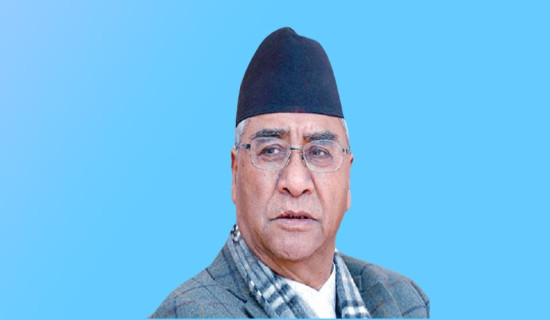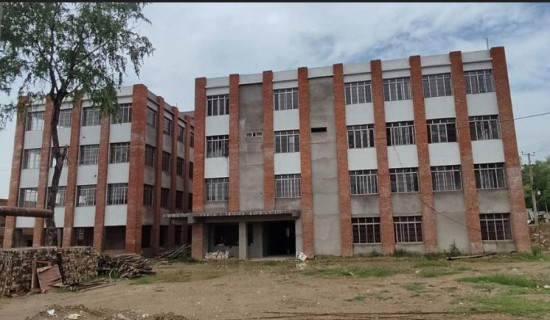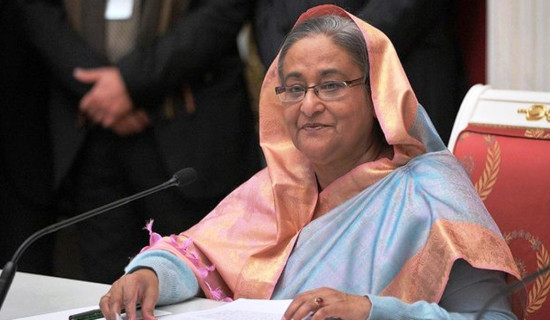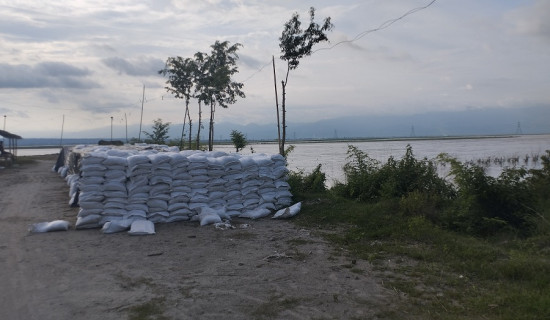- Thursday, 3 July 2025
GCF approves US$36.1 million grant to Nepal
By A Staff Reporter,Kathmandu, July 3: The Green Climate Fund (GCF) has approved a US $36.1 million grant to help Nepal reduce the growing threat of glacial lake outburst floods (GLOFs), a major and accelerating climate risk in the Himalayas.
The approval marks a new chapter in how Nepal prepares for climate threats, shifting from reacting after floods to preventing them before they happen.
Led by Department of Hydrology and Meteorology in partnership with the United Nations Development Programme (UNDP), the new project will benefit over 2.2 million people living in vulnerable mountain regions, a press statement issued by UNDP on Tuesday read.
Key components of the seven-year project include expanding and upgrading hazard monitoring and early warning systems; reducing water levels in four high-risk glacial lakes (Thulagi, Lower Barun, Lumding Tsho, and Hongu 2); strengthening riverbanks and flood-prone areas through reforestation and protective infrastructure such as check dams and vegetative gabion walls; and helping national and local authorities, first responders and communities to plan and prepare for future risks.
Kamal Ram Joshi, Director General of DHM, observed, “Building on the success at Tsho Rolpa and Imja lakes, DHM -- together with UNDP and local partners -- is launching a major initiative to reduce the risk of glacial lake outburst floods in the Koshi and Gandaki river basins. This project will help protect vulnerable Himalayan communities by strengthening local capacity and safeguarding lives, livelihoods, and infrastructure.”
“We thank the Green Climate Fund for supporting this vital initiative. By empowering communities and restoring ecosystems, this joint initiative with UNDP will boost our resilience to GLOFs and climate-driven floods. We are committed to the successful implementation and sustainability of the project interventions," said Badri Raj Dhungana, Director General of the Department of Forests and Soil Conservation.
Likewise, Henry Gonzalez, Chief Investment Officer of the Green Climate Fund, said, “The year 2025 becomes a milestone year for the world’s glaciers, the rapid retreat of Himalayan ice leaves no room for delay. With Himalayan glaciers retreating at an accelerating rate, immediate measures are critical for mountain communities’ resilience.”
He said the project would enhance GLOF early warning systems and nature-based solutions to mitigate glacier risks and create enabling environment for market opportunities.
“This initiative focuses on protecting vulnerable communities and infrastructure and establishing a replicable model for climate adaptation in mountain regions globally,” he added.
Rising temperatures are rapidly transforming the country’s snowpack, glaciers, permafrost, and precipitation -- shifting not just the scale and frequency of mountain hazards, but their very nature, said ICIMOD Director General Pema Gyamtsho.
“We welcome GCF’s support for this GLOF project and look forward to working with UNDP and DHM to save lives, protect livelihoods, and build long-term resilience across the mountains.”
UNDP welcomes the opportunity to partner with the Government of Nepal to tackle some of the most urgent and complex climate risks facing mountain regions today, said Kyoko Yokosuka, UNDP Resident Representative in Nepal.
“Supported by the Green Climate Fund, this initiative represents a long-term investment to protect lives and strengthen resilience where it matters most. It is climate action that is both grounded and game-changing,” Kyoko said.
The Himalayas are heating up, posing a rising threat not just to Nepal but to millions living downstream. Glaciers in the Hindu Kush Himalaya are melting faster than ever.
This is causing glacial lakes to swell, increasing the risk of sudden, destructive floods. Nepal has more than 2,000 glacial lakes, of which 21 are considered potentially dangerous.
Combining early warning systems, engineering solutions and nature-based approaches to reduce the risk of glacial lake outburst floods, the project directly contributes to Nepal’s adaptation priorities set out under its National Adaptation Plan (2021-2050) and Nationally Determined Contribution 3.0, the statement said.
The project aims to catalyse future public and private investment in climate risk reduction, setting an example that other high mountain countries can follow, with an additional $14 million in co-financing from the Government of Nepal and partners, brings the total funding to nearly $50 million.
The project is partnering with the private sector to co-finance hydro-meteorological stations and early warning systems and will also work with local governments and the private sector on community-based adaptation initiatives.







-square-thumb.jpg)








